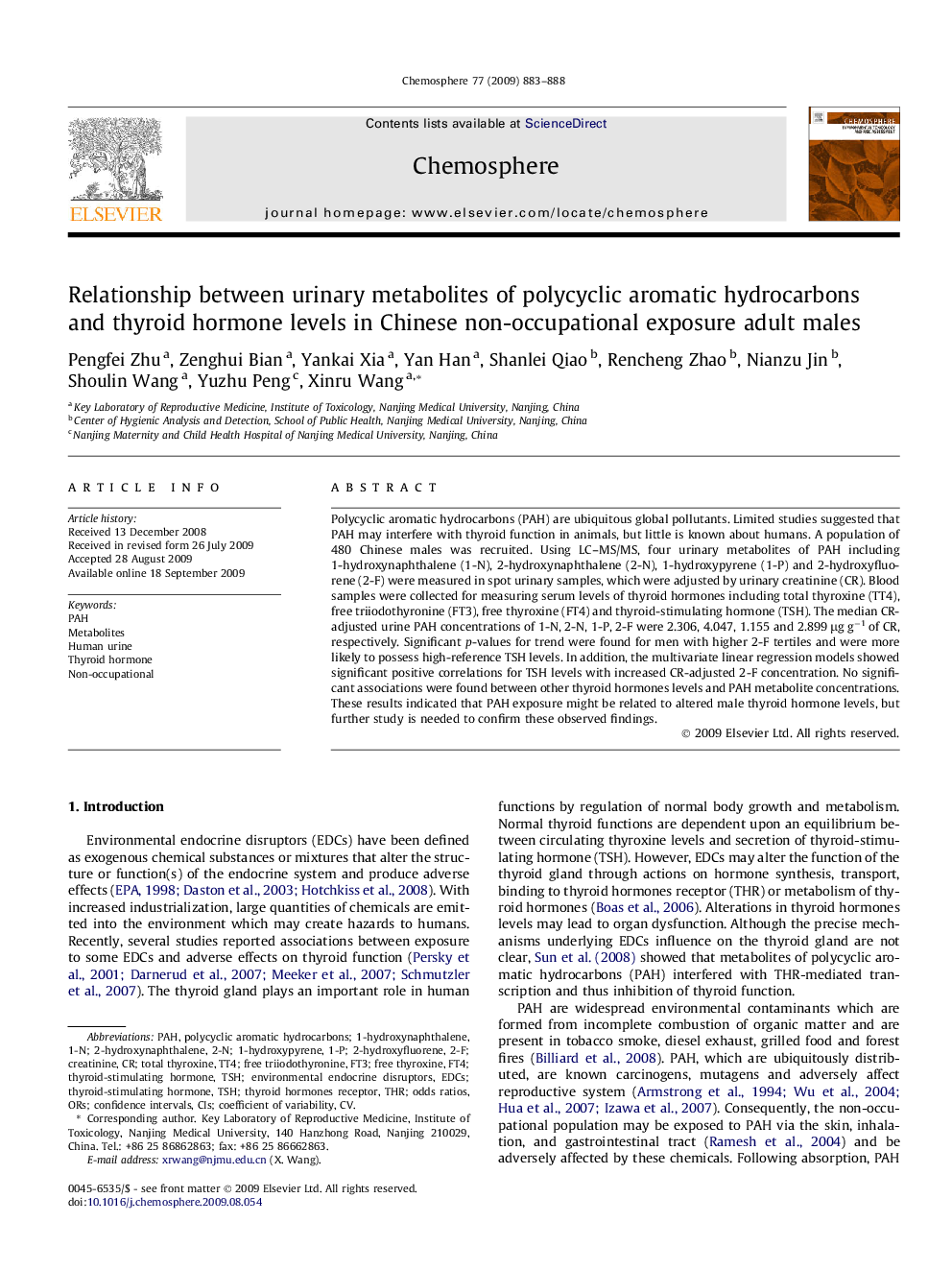| Article ID | Journal | Published Year | Pages | File Type |
|---|---|---|---|---|
| 4412428 | Chemosphere | 2009 | 6 Pages |
Polycyclic aromatic hydrocarbons (PAH) are ubiquitous global pollutants. Limited studies suggested that PAH may interfere with thyroid function in animals, but little is known about humans. A population of 480 Chinese males was recruited. Using LC–MS/MS, four urinary metabolites of PAH including 1-hydroxynaphthalene (1-N), 2-hydroxynaphthalene (2-N), 1-hydroxypyrene (1-P) and 2-hydroxyfluorene (2-F) were measured in spot urinary samples, which were adjusted by urinary creatinine (CR). Blood samples were collected for measuring serum levels of thyroid hormones including total thyroxine (TT4), free triiodothyronine (FT3), free thyroxine (FT4) and thyroid-stimulating hormone (TSH). The median CR-adjusted urine PAH concentrations of 1-N, 2-N, 1-P, 2-F were 2.306, 4.047, 1.155 and 2.899 μg g−1 of CR, respectively. Significant p-values for trend were found for men with higher 2-F tertiles and were more likely to possess high-reference TSH levels. In addition, the multivariate linear regression models showed significant positive correlations for TSH levels with increased CR-adjusted 2-F concentration. No significant associations were found between other thyroid hormones levels and PAH metabolite concentrations. These results indicated that PAH exposure might be related to altered male thyroid hormone levels, but further study is needed to confirm these observed findings.
